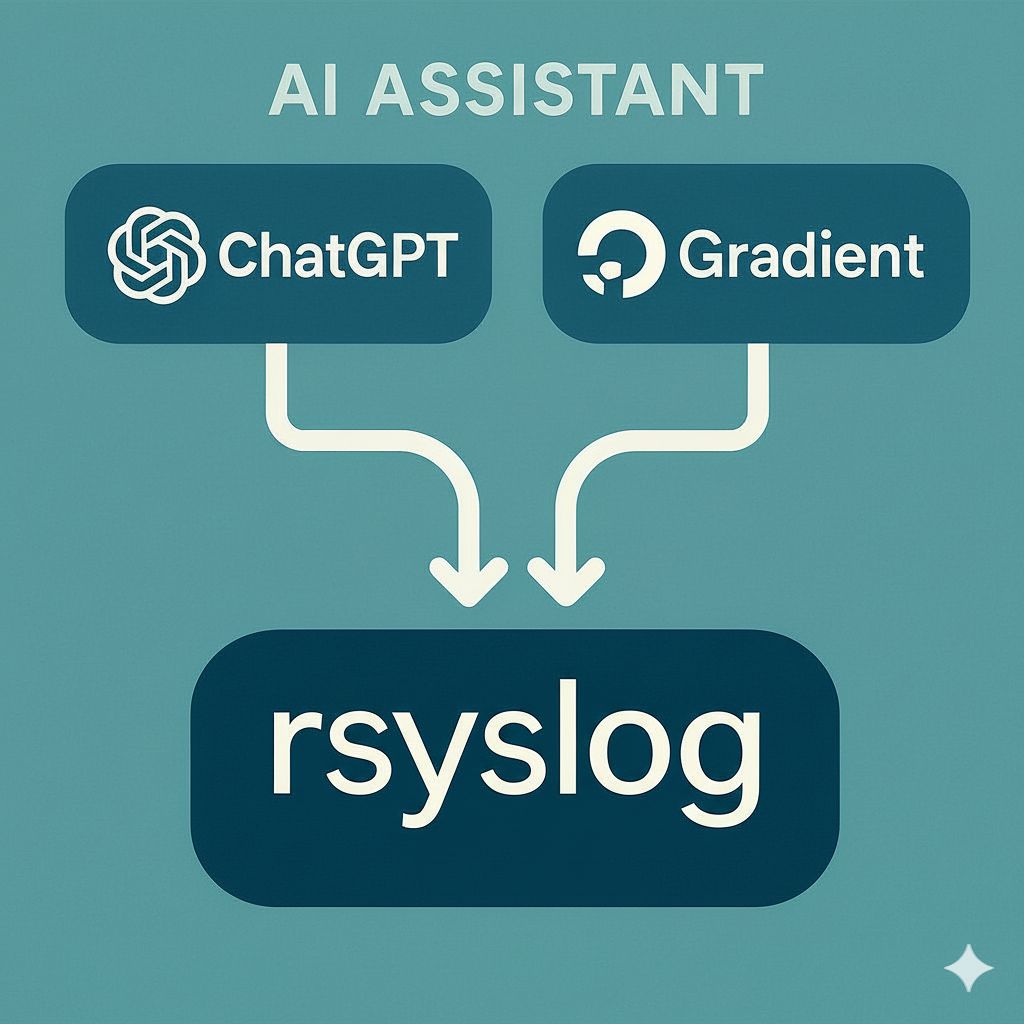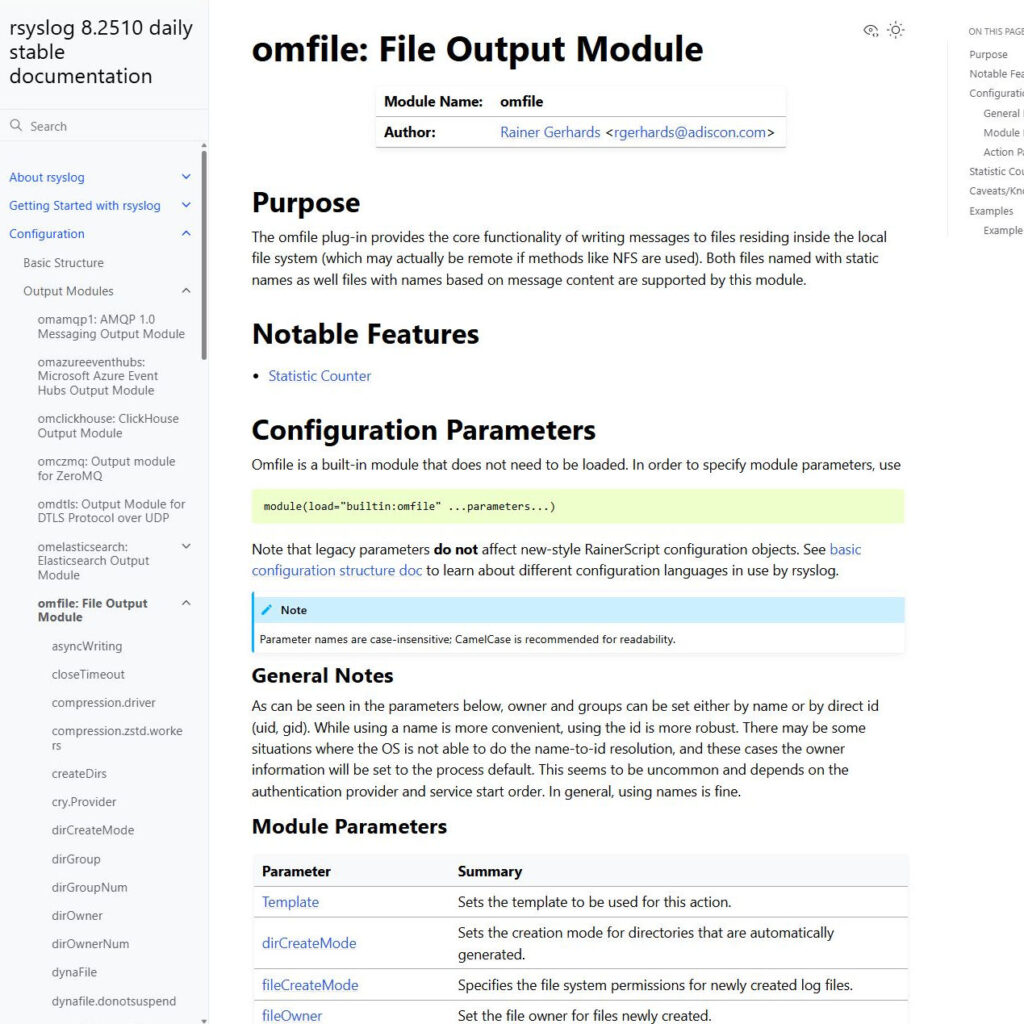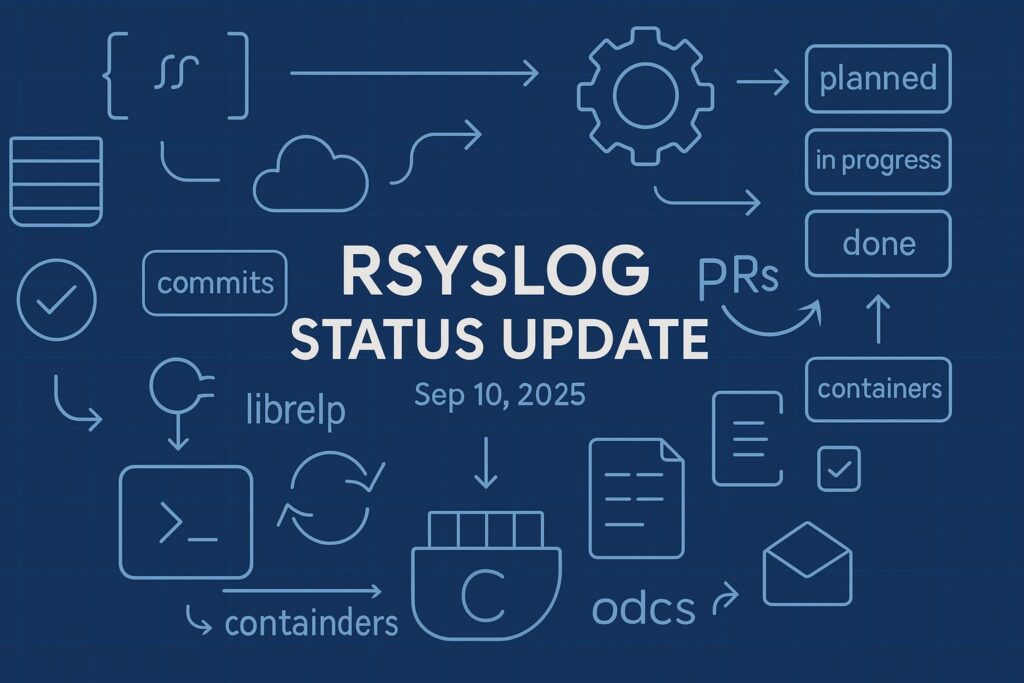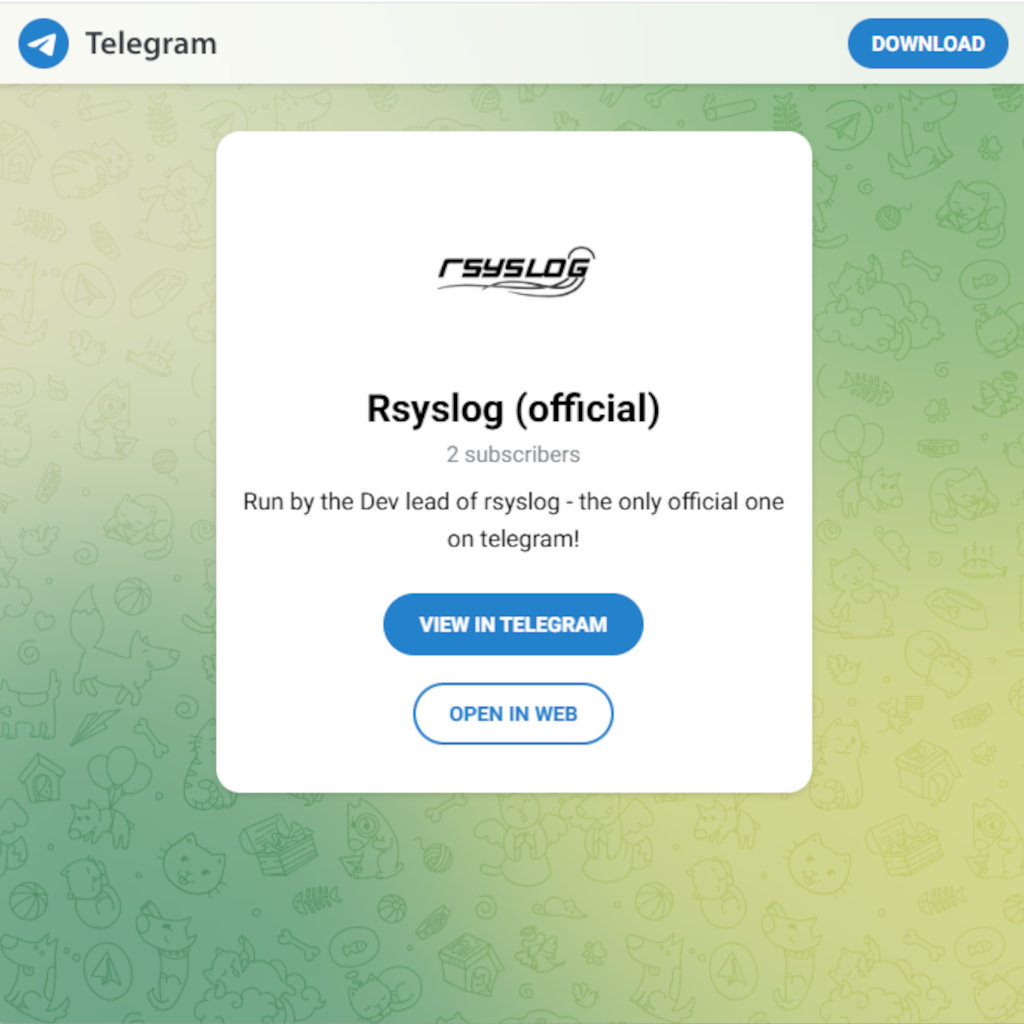A few days ago, we posted the short announcement on the project site:
👉 New rsyslog AI Assistant — powered by DigitalOcean Gradient
This is the longer story: the plan, the first results, and what we think is sensible to do next.


Tech Enthusiast. Nature Lover. Computer Geek. rsyslog lead developer.
A few days ago, we posted the short announcement on the project site:
👉 New rsyslog AI Assistant — powered by DigitalOcean Gradient
This is the longer story: the plan, the first results, and what we think is sensible to do next.

I’ve been getting a steady stream of questions from admins searching for a dependable Windows syslog server. Many of them mention frustration with recent Kiwi Syslog versions — unclear message parsing, configuration quirks, or just a feeling that things have become harder than they should be. There seems to be especially a lot of frustration with the “Kiwi Syslog Server NG” version, based on the emails I receive.
Since the topic keeps coming up, let me share the same recommendation I give privately. If you’re currently evaluating syslog solutions, this detailed comparison between WinSyslog and Kiwi Syslog Server covers the technical differences and can help inform your decision.
Continue reading “Looking for an Alternative to Kiwi Syslog? Try WinSyslog.”I recently had a discussion about data lakes. It made me realize that people often picture them as the starting point of data collection — as if all information somehow appears in the lake. In reality, no lake exists without rivers. And in the world of IT systems, rsyslog is part of that river system.

Windows logs provide a wealth of information that must be made usable for Observability. As you may know, I work on normalizing these logs for quite some while, I even created liblognorm for that purpose. Ingesting them properly is important for schema mapping, e.g. to Elastic Cloud.
Continue reading “Revisiting old style Windows Log Schema Mapping”I am glad to tell that I finally managed to solve an issue that caused confusion for years. Someone had cloned and published the rsyslog documentation at readthedocs. Unfortunately, it was not maintained afterwards and also looked like an official rsyslog doc. That added a lot to the “rsyslog’s doc is bad and inconsistent” feel inside the community. This could now be resolved, and current, official doc is now available at readthedocs. I am very happy and glad for readthedocs staff members who helped us to finally resolve the issue.

Time goes fast, it is Sep 10 already. Mid August I said we will do a great refactoring of omhttp within a week or two. Well, that did not work out as planned. We still made solid progress, but more pressing work put it on hold for a bit. Time for a small update of what is happening in rsyslog.

In the past days I noticed PR patterns that do not look right. This is a smell, not a verdict. The upside is real: rsyslog is interesting enough to attract attention. That is actually great news. Now we have the problem ourselves, and that is the moment to engineer the right guardrails without losing our welcoming tone. You need to be a target in order to gain sufficient experience to tackle that hard problem.

TL;DR
I want to be very honest with you: my responses to pull requests and issues have been sluggish for quite some time. This affected the whole rsyslog project, because in the end it always comes back to the limited capacity of the maintainers – and most often, that means me.
We are working hard to change this. It will not mean ultra-fast turnaround times, but it will mean reasonable turnaround times. We have already made important steps, and AI will play a key role in improving this going forward. Still, this is work in progress, and I welcome your suggestions.
Continue reading “Sluggish Responses – And How We Plan to Do Better”Seventeen years old, raw “armchair philosophy” — but surprisingly close to what I still believe today.
While reflecting on my current work, I remembered a text I had written in April 2008 during a discussion with a friend in biology. It’s an unfinished “armchair philosophy” piece — raw, dense, and hard to read — but it still reflects many of my core beliefs about IT systems. I’m publishing it unchanged as an archival entry, because the foundations it sketches are still relevant today.
Continue reading “An old and possibly important text rediscovered…”I’ve long had mixed feelings about messengers – especially WhatsApp—because of privacy concerns. At the same time, as a councilman in my village, WhatsApp is essentially unavoidable in Germany. Announcements, e.g. from Public bodies and personal conversations – much of the day-to-day information flow runs through it. So I use it in that local role and follow announcement channels from government institutions. It also the tool to go for one-on-one conversations with my fellow citizens.

(Side note: for genuinely private conversations with security-aware folks, I prefer Threema. I’m well aware of the privacy trade-offs.)
Continue reading “Why I’m Trying Rsyslog Channels on WhatsApp and Telegram”